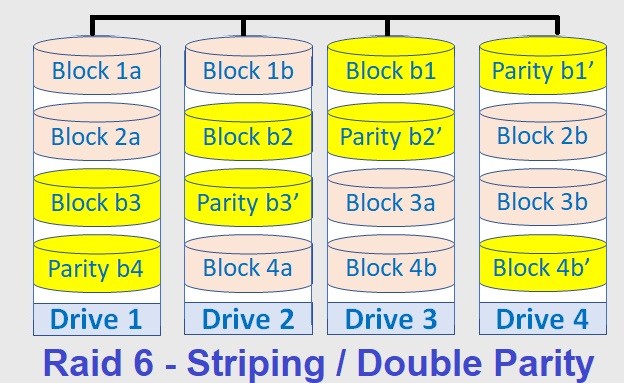RAID 6 Data Recovery
RAID Data Recovery Services
RAID 6 is like RAID 5, but the parity data are written to two drives. That means it requires at least 4 drives and can withstand 2 drives dying simultaneously. The chances that two drives break down at exactly the same moment are of course very small.
However, if a drive in a RAID 5 systems dies and is replaced by a new drive, it takes hours or even more than a day to rebuild the swapped drive. If another drive dies during that time, you still lose all of your data. With RAID 6, the RAID array will even survive that second failure.

Advantages of RAID 6
Disadvantages of RAID 6
RAID Failures
 RAID controller failure
RAID controller failure Rebuild failure
Rebuild failure Damaged striping
Damaged striping Multiple drive failure
Multiple drive failure Drive not detecting in BIOS
Drive not detecting in BIOS  Configuration damage or corruption
Configuration damage or corruption
